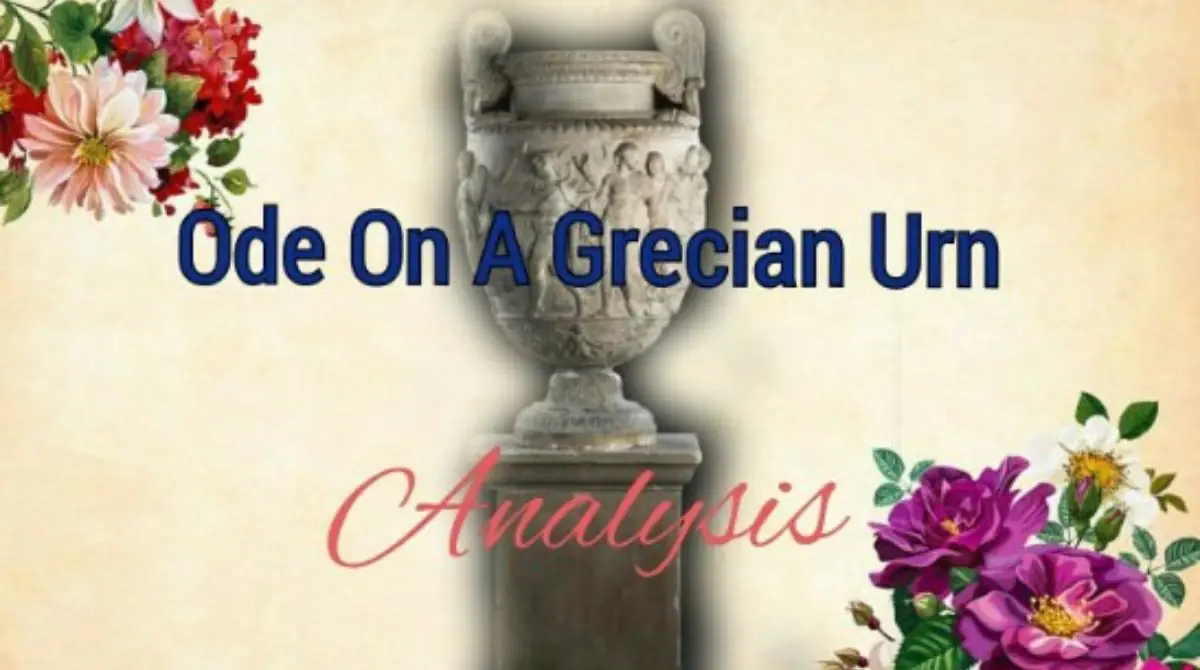Let’s Click on the PLAY button below to know the Summary and Important Features of the poem Ode On A Grecian Urn
Substance and analysis of the poem Ode on a Grecian Urn
The poet is deeply moved by observing some artistic engravings on an old Grecian Urn. The vessel has been speechless through ages. But its engraved pictures are more eloquent than human history. These pictures are from Greek pastoral life and they are fine perpetual works of art.
So they have survived the ravages of cruel time. The poet is eager to know whether the figures curved on the Urn represent some human beings or deities or both. He is not also sure as to which locality they belong to.
On one side of the vessel, the poet observes a few young girls are hotly pursued by some passionate young men. On another side, he finds a number of people joyous with pipes and timbrels. The poet wonders what all these scenes really signify.
Whoever these persons and whatever these scenes may be, Art has given them an immortality. The poet says that melodies heard by the physical ears are pleasing for a time only but pipes on the lips of people on the Urn make melodies to the imaginative ears which can never lose their voiceless charm.
The youth who is piping in the scene under a green tree will play on the pipe forever. The young man who is running after a girl to kiss her will never get her blessings. So, both of them will never loss their physical charms. They will never know love’s sad satiety. The trees on the Urn will also remain ever green. Fine art has immortalised them. They contrast sharply with the impermanence of real life.
The poet speaks of another picture, engraved on another side of the Urn. It is the picture of a sacrificial procession. A large number of men and a priest are leading a garlanded and silken dressed heifer to a distant alter for sacrifice. The town from which they have emerged, will remain empty for ever because art has arrested the motion of the crowd on the Urn. The scene is how almost immortal in its beauty of the moment.
The marble Urn, a genuine relic of Greek art with sculptured figures of men, women, trees etc. awakens in us profound thoughts and feelings. When this present generation will pass away, the Grecian Urn will continue to exist and witness the sorrows and sufferings of future generations. It will carry to them its noble message that beauty and truth are identical and the beauty of art, because of eternity and changelessness, is the truth to which men ought to turn from the untruth of earthly things which are changeable and transient.
At the end of his Ode, John Keats expresses a noble message to mankind through the Grecian Urn. The message is “Beauty is truth, truth beauty”. The deep meaning of this line is that a genuine work of art by arresting the beauty is permanent. Whereas human life and all earthly things are impermanent.
As Art is permanent, containing beauty, so there is truth in it. Keats is of opinion that beauty and truth are identical. A thing which enshrines true beauty (moral, spiritual, ethical etc) must contain truth and vice versa. Truth can not exist without beauty nor beauty can exist without truth. If there be truth without beauty or beauty without truth, it has no significance to mankind. This is the supreme lesson which a man ought to learn for the sake of his happiness and when the lesson is learnt, he has no need to learn further.
You may also like:
- Ode To The West Wind Summary Questions Answers
- Ode To Autumn Questions Answers Analysis
- Leisure Poem Questions Answers Summary
